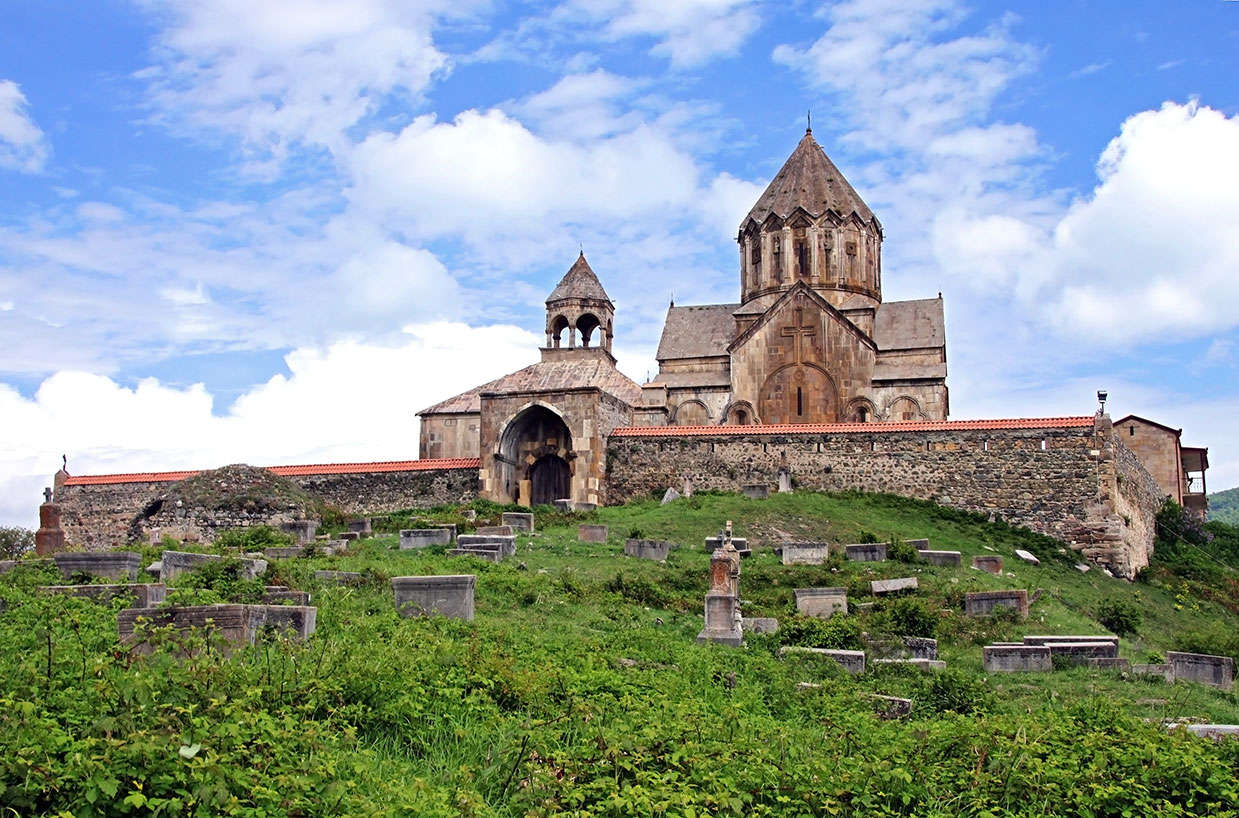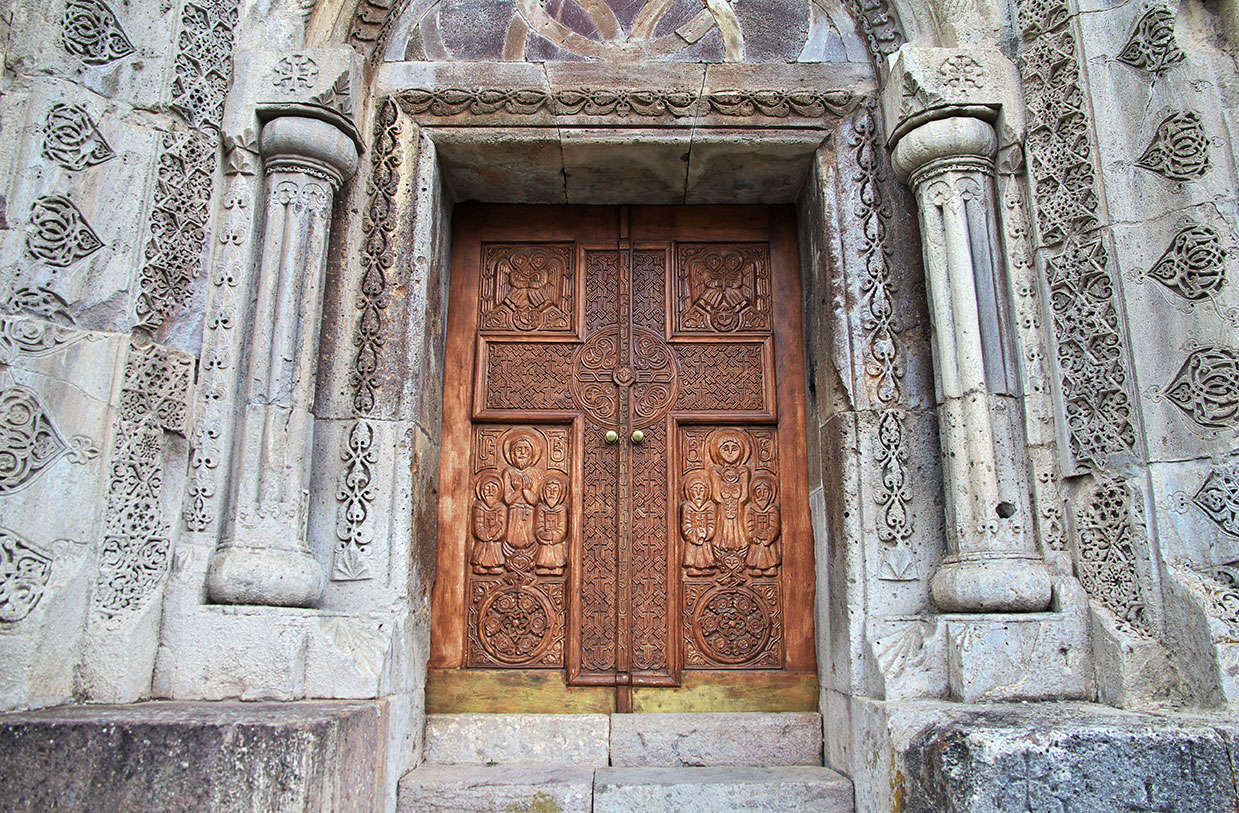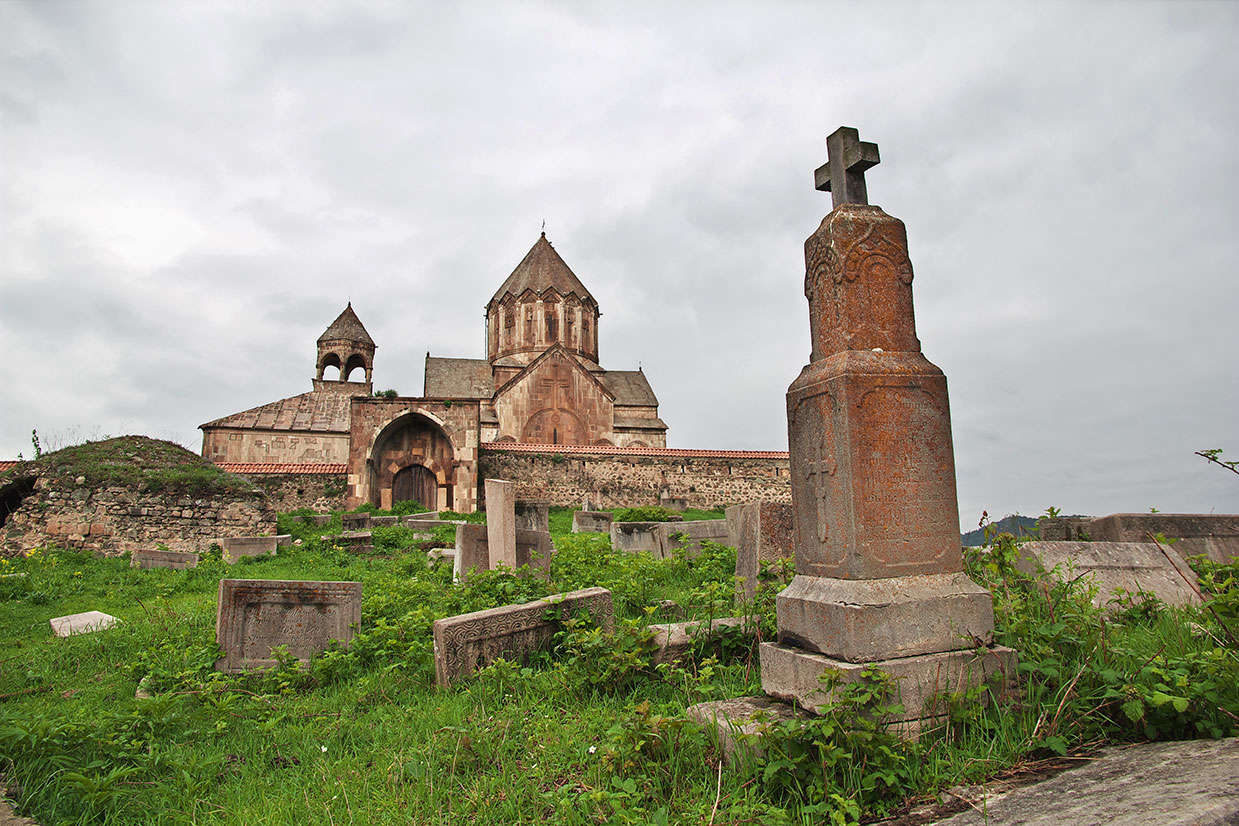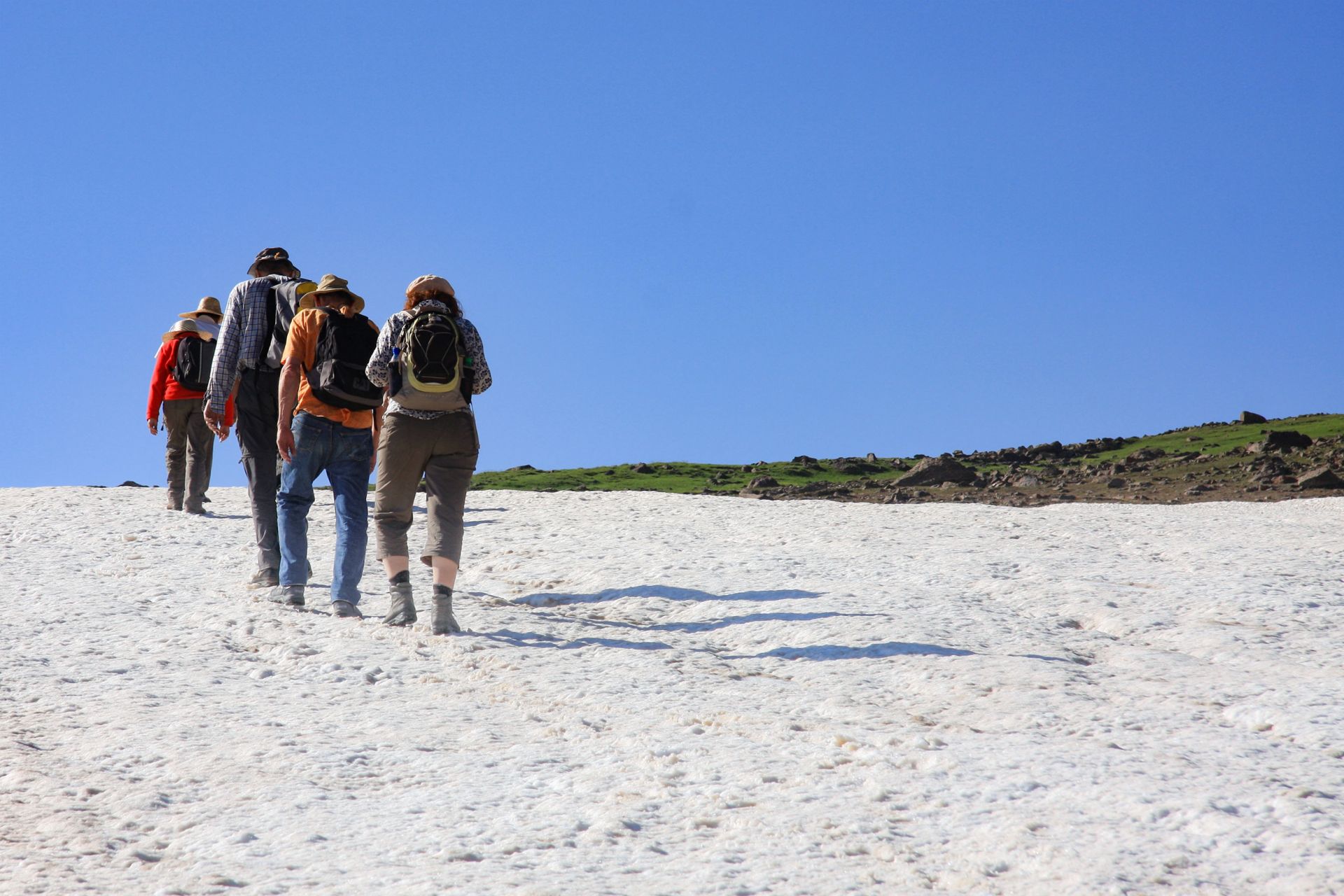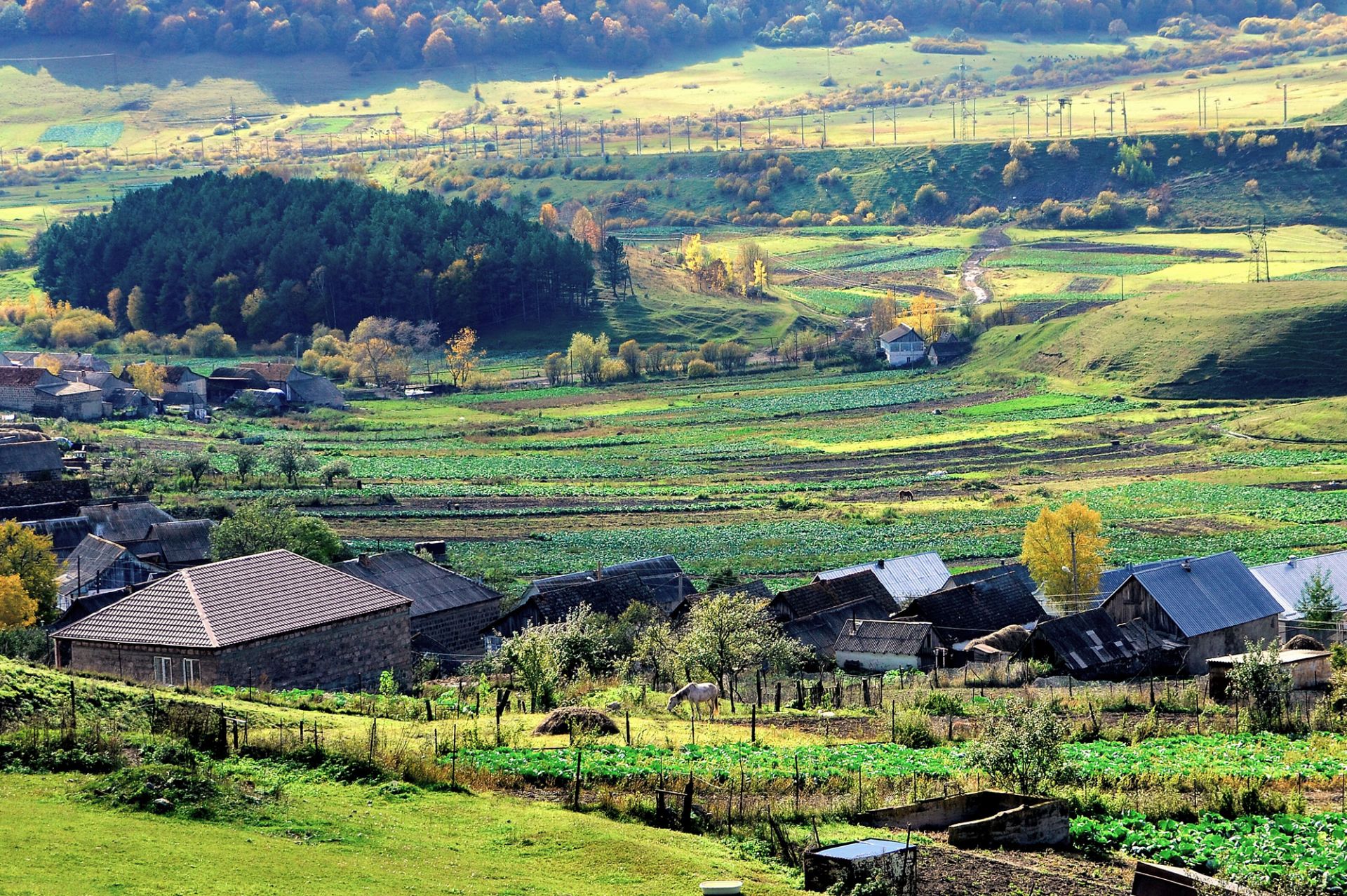Gandzasar Monastery
The monastery Gandzasar is located in the Republic of Artsakh, not far from the capital Stepanakert. Stepanakert was built at the beginning of the 19th century on the site of the village Vararakn, on the territory of today's city. The city is located on the eastern slopes of Nagorno-Karabakh. The first city map (1926) was drawn by Alexander Tamanyan, who was the architect of the capital of Armenia, Yerevan. One of the main attractions of the city is the monument "We are Our Mountains", rising on a hill. It is often called "Grandma and Grandpa" monument and represents an old married Armenian couple. In the city, there are also many other interesting landmarks and sights which are worth visiting. The Gandzasar's Cathedral of St. John the Baptist was founded in 1216 under the patronage of the Armenian prince Hasan Jalalian.
The word "Gadzasar" means "treasure mountain" in Armenian. It served as the seat of the Catholicos of Aghovania in the Middle Ages. Although officially affiliated with the Holy See of Echmiadzin, the Church of Artsakh always had a degree of autonomy and played a significant role in the development of the intellectual life of the region. Even before the construction of the main church, which is dedicated to St. John, a narthex (vestibule/gavit) was built in 1238. The seat of the Catholicos of Aghovania hosted an important scriptorium of Armenia here. It was also known as the holy seat of Gandzasar. Today, Gandzasar is the seat of the Archbishop of Artsakh, who was appointed by the Mother See of Holy Echmiadzin of the Armenian Apostolic Church. The monastery is located in the valley of Khachen. It was built of red tuff stone, but over time it turned reddish brown. High walls protect the monastery complex. Inside the complex, the Cathedral of St. John the Baptist is located. The lobby of the monastery resembles a Gavit. Its exterior has different ornaments and cravings expressing the architectural style of that times. They represent the cross of Jesus Christ, Adam and Eve.
The monastery is a masterpiece of Armenian medieval architecture. Anatoli Jakobson, a well-known and honoured Soviet art historian of the Middle Ages, described Gandzasar as "a pearl of architectural art". The Gandzasar Cathedral shares the most of its architectural styles with the main churches of two other Armenian monasteries, also built in the middle of the 13th century: the monasteries Hovhannavank and Harichavank. During the Soviet Union, the church was in very poor condition with many other churches in Armenia. The churches were closed or destroyed and priests were persecuted. In 1991, the Nagorno-Karabakh war began. The monastery was damaged during the Nagorno-Karabakh war. At the end of the war, it was restored and the asphalt road was built here. Today, the monastery has become not only a place of pilgrimage for the religious people of Armenia but also a tourist destination for those who travel to Armenia and the Republic of Artsakh. Many baptisms, weddings, funerals, and other ceremonies are held in the church. Here, the village cemetery is situated. Near the monastery, there is also another monastery from the 9-13th centuries. The church of the monastery was built in 1214. Gandzasar offers a magnificent view of the mountains and valleys. The combination of the monastery and nature makes this place an ideal destination for foreigners and locals.
